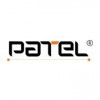Filter interviews by
Sterling Indo Tech Consultants Assistant Highway Engineer Interview Questions and Answers
Sterling Indo Tech Consultants Assistant Highway Engineer Interview Experiences
1 interview found
I applied via Referral and was interviewed in Feb 2021. There was 1 interview round.
Interview Questionnaire
1 Question
- Q1. Asked about densities of different layers of flexible pavement, roller speed , about breast wall and retaining wall, about previous projects etc
Interview Preparation Tips
Top trending discussions






Interview questions from similar companies

Assistant Manager Interview Questions & Answers
D.p. Jain & Co. Infrastructure Pvt .posted on 17 Dec 2023
I applied via Approached by Company and was interviewed in Jun 2023. There were 4 interview rounds.

(1 Question)
- Q1. Discussion about the profile
(1 Question)
- Q1. Site reporting manager ask questions as per core relevants.
(1 Question)
- Q1. Ask all technical questions regarding the core relevant areas
Interview Preparation Tips

I appeared for an interview in Oct 2024, where I was asked the following questions.
- Q1. What are the basic principles of budget control?
- Ans.
Budget control involves planning, monitoring, and adjusting financial resources to achieve organizational goals effectively.
Establishing a budget: Create a detailed financial plan outlining expected revenues and expenses, e.g., annual departmental budgets.
Monitoring performance: Regularly compare actual financial performance against the budget to identify variances, e.g., monthly financial reports.
Variance analysis: In...
- Q2. What is the significance of the Building and Other Construction Workers (BOCW) Act in relation to minimum wages for laborers?
- Ans.
The BOCW Act ensures minimum wages and welfare for construction workers, promoting their rights and safety.
The BOCW Act mandates the payment of minimum wages to construction workers, ensuring fair compensation for their labor.
It establishes welfare measures such as health insurance, housing, and education for workers and their families.
The Act applies to various construction activities, including building, roads, and b...
- Q3. What is the difference between indirect costs and overhead costs?
- Ans.
Indirect costs are expenses not directly tied to a product, while overhead costs are ongoing business expenses.
Indirect costs are not directly attributable to a specific project or product, e.g., administrative salaries.
Overhead costs include all ongoing expenses to operate a business, e.g., rent, utilities.
All overhead costs are indirect costs, but not all indirect costs are overhead costs.
Examples of indirect costs: ...
Interview Preparation Tips

I appeared for an interview in Mar 2025, where I was asked the following questions.
- Q1. Technical civil
- Q2. Civil Quality cube test
Interview Preparation Tips

Civil Site Engineer Interview Questions & Answers
D.p. Jain & Co. Infrastructure Pvt .posted on 10 Dec 2022
I applied via Referral and was interviewed before Dec 2021. There were 2 interview rounds.

(5 Questions)
- Q1. In which firm you have worked before?
- Ans.
I have worked at XYZ Engineering Firm as a Civil Site Engineer.
Worked at XYZ Engineering Firm
Position: Civil Site Engineer
Responsibilities included site inspections, project management, and coordination with contractors
Completed projects include construction of a commercial building and a residential complex
- Q2. What was your job profile ?
- Ans.
As a Civil Site Engineer, my job profile involved overseeing construction projects, managing site operations, and ensuring compliance with safety regulations.
Managed and supervised construction projects from start to finish
Coordinated with architects, contractors, and subcontractors to ensure smooth project execution
Monitored site operations and ensured adherence to project plans and specifications
Performed quality con...
- Q3. How many years of experience you have?
- Ans.
I have 5 years of experience as a Civil Site Engineer.
I have worked on various construction projects, including residential, commercial, and infrastructure.
During my time as a Civil Site Engineer, I have successfully managed and supervised construction activities.
I am well-versed in interpreting engineering drawings and specifications.
I have experience in conducting site inspections and ensuring compliance with safety ...
- Q4. What was your work exactly?
- Ans.
I worked as a Civil Site Engineer, responsible for overseeing construction projects and ensuring their successful completion.
Managed and supervised construction activities on site
Ensured compliance with building codes and regulations
Collaborated with architects, contractors, and other professionals
Prepared and reviewed project plans, drawings, and specifications
Monitored progress and quality of work
Resolved any issues ...
- Q5. General civil engineering questions like full form of TBM? Types of soil?
Interview Preparation Tips

Software or tool test
(2 Questions)
- Q1. Related to technical question about fabrication.
- Q2. Tool related question

Civil Site Engineer Interview Questions & Answers
D.p. Jain & Co. Infrastructure Pvt .posted on 10 Aug 2024
I applied via Naukri.com and was interviewed in Jul 2024. There was 1 interview round.
(2 Questions)
- Q1. How much your Salary
- Ans.
My salary is competitive and based on my experience, qualifications, and the current market rates for Civil Site Engineers.
My salary is determined by factors such as my level of experience in the field.
Qualifications and certifications also play a role in determining my salary.
Market rates for Civil Site Engineers in the specific location where I work also influence my salary.
I am open to discussing salary expectations...
- Q2. When you Join, We need urgent requirement
Interview Preparation Tips

I applied via Naukri.com and was interviewed in May 2021. There were 3 interview rounds.
Interview Questionnaire
3 Questions
- Q1. What is the height of top guard rails,mid rails and toe board rails?
- Ans.
The height of top guard rails, mid rails, and toe board rails varies depending on the specific application and regulations.
The height of top guard rails is typically between 42 and 45 inches above the walking surface.
Mid rails are typically located halfway between the top rail and the walking surface.
Toe board rails are typically between 4 and 6 inches high and are installed at the base of the guardrail system.
Specific...
- Q2. What is safe working load and formula?
- Ans.
Safe working load is the maximum weight a structure or equipment can safely support without risk of failure.
SWL is determined by factors such as material strength, design, and intended use.
Formula for SWL varies depending on the type of equipment or structure.
For example, the SWL formula for a crane may take into account the boom length, angle, and weight distribution.
It is important to always follow the manufacturer's...
- Q3. Job role and duties of HSE engineer
- Ans.
HSE engineers ensure health, safety, and environmental standards are met in various industries to protect workers and the environment.
Conduct risk assessments to identify potential hazards in the workplace.
Develop and implement safety policies and procedures, such as emergency response plans.
Monitor compliance with health and safety regulations, ensuring adherence to local and international standards.
Provide training a...
Interview Preparation Tips

Civil Site Engineer Interview Questions & Answers
Patel Infrastructureposted on 29 Jan 2024
I applied via Recruitment Consulltant and was interviewed in Dec 2023. There were 2 interview rounds.
(1 Question)
- Q1. Plz brief himself
(2 Questions)
- Q1. Which type of foundation you done?
- Ans.
I have experience with various types of foundations including shallow foundations, deep foundations, and pile foundations.
Shallow foundations: These are used when the soil is stable and can support the load of the structure. Examples include spread footings and mat foundations.
Deep foundations: These are used when the soil near the surface is not suitable for supporting the load. Examples include pile foundations and d...
- Q2. Open foundation or pile foundation
- Ans.
Open foundations are suitable for shallow soil, while pile foundations are used for deeper, weaker soil conditions.
Open foundations are cost-effective for stable soil conditions, e.g., residential buildings.
Pile foundations are necessary for high-rise buildings on weak soil, e.g., skyscrapers.
Open foundations require less excavation and are quicker to construct.
Pile foundations can reach deeper soil layers, providing b...
Interview Preparation Tips
- Foundation
- Girder
- Piling
- Mnb
- Mjb
- culverts
- Flyovers
- Casting yard
- Reinforcement
- Site Execution

Highway Engineer Interview Questions & Answers
D.p. Jain & Co. Infrastructure Pvt .posted on 21 Mar 2023
I applied via Walk-in and was interviewed before Mar 2022. There were 2 interview rounds.

(3 Questions)
- Q1. Site related questions
- Q2. How to calculate quantity of PQC
- Ans.
Quantity of PQC can be calculated by multiplying area with thickness
PQC stands for Pavement Quality Concrete
Area is calculated by measuring length and width of the pavement
Thickness is usually 150 mm for highways
Quantity = Area x Thickness
- Q3. How to calculate quantity of DBM
- Ans.
Quantity of DBM can be calculated by using the formula: Volume of DBM = Area x Thickness
Calculate the area of the road surface to be covered with DBM
Determine the required thickness of the DBM layer
Multiply the area by the thickness to get the volume of DBM required
Consider the wastage factor while calculating the quantity of DBM
Use appropriate units of measurement for accuracy
Interview Preparation Tips
Sterling Indo Tech Consultants Interview FAQs
Tell us how to improve this page.
Sterling Indo Tech Consultants Interviews By Designations
- Sterling Indo Tech Consultants CAD Expert Interview Questions
- Sterling Indo Tech Consultants Office Manager Interview Questions
- Sterling Indo Tech Consultants Computer Operator Interview Questions
- Sterling Indo Tech Consultants Assistant Highway Engineer Interview Questions
- Sterling Indo Tech Consultants Senior Project Engineer Interview Questions
Interview Questions for Popular Designations
- Assistant Manager Interview Questions
- Quality Engineer Interview Questions
- Civil Site Engineer Interview Questions
- Assistant Engineer Interview Questions
- Senior Civil Engineer Interview Questions
- Billing Engineer Interview Questions
- Senior Site Engineer Interview Questions
- Assistant Project Manager Interview Questions
- Show more
Interview Questions from Similar Companies

Sterling Indo Tech Consultants Assistant Highway Engineer Reviews and Ratings
based on 5 reviews
Rating in categories
|
Office Manager
22
salaries
| ₹1.5 L/yr - ₹3.6 L/yr |
|
Assistant Highway Engineer
19
salaries
| ₹3 L/yr - ₹5 L/yr |
|
Computer Operator
8
salaries
| ₹1.5 L/yr - ₹2 L/yr |
|
Survey Engineer
7
salaries
| ₹2.8 L/yr - ₹7.1 L/yr |
|
HR Executive
6
salaries
| ₹2.2 L/yr - ₹4.7 L/yr |

Patel Infrastructure

CTS Consulting & Technical Support

J K Fenner

Saudi Binladin Group
- Home >
- Interviews >
- Sterling Indo Tech Consultants Interview Questions












